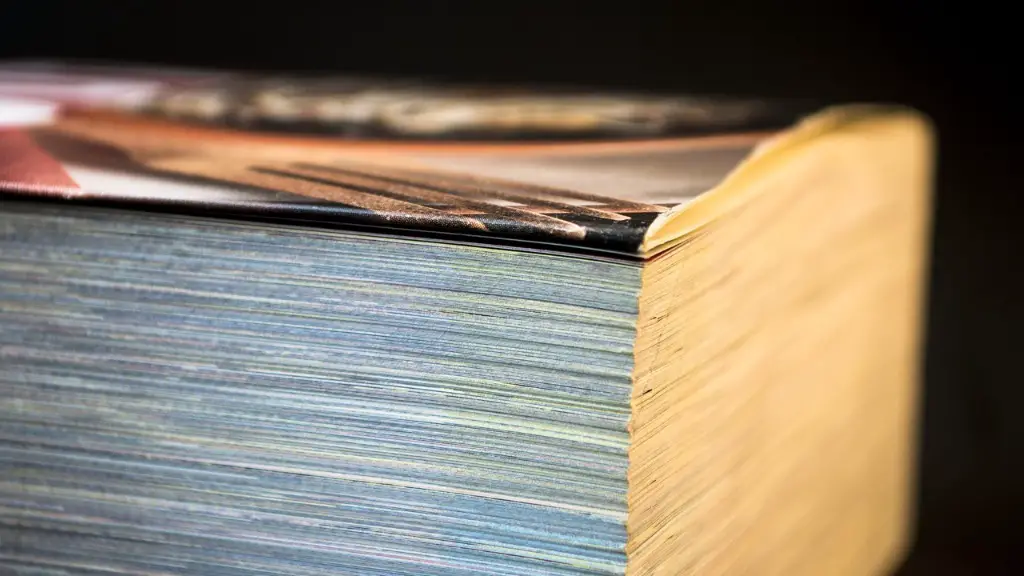Understand the Basics of Quoting Lines of Poetry with MLA
Quoting lines of poetry with MLA can seem daunting and overwhelming, especially if you’re quoting a long poem or unfamiliar verse. However, using the correct style and following certain guidelines can make the process much easier and help you maintain the author’s structure and meaning. This article will explore the basics of quoting lines of poetry MLA-style and help you navigate the intricacies of any poem.
Follow the In-Text Citation Guidelines for MLA
When quoting lines of poetry with MLA, always follow the citation format for that particular style, which includes the author’s last name, a shortened version of the title (in italics) and the line numbers. When quoting more than three lines, set it off as a block quote. All in-text citations should be placed in quotation marks. Here’s an example:
“It’s our old hide-and-seek muse–the what-is-it / That always trips, and always is found out?” (Frost 9-10).
Include a Reference List at the End of the Document
In MLA style, all references used in the document must be included in a Works Cited page at the end of the document. This page should include the last name of the author, the title of the work (in italics), the publisher, the publication date and the page number. Keep in mind that you should also include other information, such as the edition, the container and any electronic sources. Here’s what it should look like for a poem:
Frost, Robert. The Road Not Taken. Holt, Rinehart, and Winston, 1915.
Pay Attention to the Line Breaks
In order to maintain the author’s intended structure and meaning, the lines should be broken up just as the authors have written them. This is why citing poetry accurately can be such a challenge, as poets often break their lines across stanzas or in unconventional ways. You can use a backslash (/) to split up a single line or use a double backslash (//) to separate two stanzas.
Writing About a Long Poem? Use ‘Significant Lines’
When dealing with a long poem, an entire essay can be devoted to it. In such a case, highlight the most significant lines of the poem. Make sure to explain the lines in a way which gives the reader a better understanding of its meaning – for example, by giving the historical or literary context of the poem, or by linking it to a theme. Doing so can make your analysis more direct and help the reader the benefit from the poem without having to read the entire thing.
Incorporate Quotes and Citations in Your Paper
When analysing a poem it’s important to cite the lines that you’re talking about. This helps you explain the arguments you’re making as well as lends credibility to your paper, as it shows that you read the work before forming your views. This also help readers who may want to track down the poem themselves and read the full context. To properly quote a line of poetry, follow the same MLA rules for citing the lines in the main body of the essay, but provide the author’s name followed by the line number in parentheses.
On Quoting a Poem’s Title
When writing about a poem, it’s important to remember that its title should always be written in italics. This is true for a work published as a book, an essay or even a play. Additionally, when citing the title, remember to indicate whether it is part of a larger anthology, such as a short story collection. In such cases, the book’s title should be written in italics and the poem title should be placed in quotation marks. For example,
In the poem “The Road Not Taken”, Frost…
Using Other Sources in Your Analysis
When analysing a poem, incorporating sources can help you provide interpretations, explain symbols, offer explanations and even refute counterarguments. It’s important to be wary of choosing sources, as they should be relevant, reliable and expert perspectives on the poem. Additionally, when using information from another source, make sure to cite their work and include them in your references at the end of the paper.
Summarize Main Ideas from the Poem
When discussing a poem, it can be helpful to summarise its main ideas to give the reader an understanding of the work. To accurately summarise a poem, first read through the poem a few times. Make note of any messages, symbols or patterns that can help you identify its main themes. Afterwards, summarise these main ideas in a few sentences which serve to accurately convey the poem’s main ideas.
Cite Sources that Provide Context and Meaning
When writing about poetry, it can be helpful to include sources which provide insight into the poem’s background and meaning. Such sources can help the reader gain a deeper understanding of the poem, as they often explain symbols or themes that can be easily missed in the text. Remember to properly cite these sources.
Maintain Accuracy with Punctuation
When quoting lines of poetry, it is essential to pay attention to punctuation as even a small difference in punctuation can drastically change the meaning of the quote. Additionally, capitalisation and italics must also be considered as not all words are capitalised in poetry. To prevent any misunderstandings, pay close attention to the original poem and be thorough when citing the poem.
Find Imaginative Ways to Present Your Analysis
When writing about literature, it’s important to be creative and unique to engage the reader. Instead of just providing a summary of the poem and a list of explainations, try to find interesting ways to present your analysis. One way to do this is to link the poem to themes, symbols or other works. This can help highlight the meaning of the poem and give the reader a better understanding of the poem.
Connect the Poem to Any Social Issues
When taking an in-depth look at a poem, try to identify any social issues or messages conveyed in the poem. Additionally, you can draw connections between the poem and current issues or themes. Doing so can help the reader gain a better understanding of the poem, as well as to identify the morals or messages expressed in the poem.
Does the Poem Have a Particular Historical Context?
When writing an analysis, take a closer look at the poem’s historical and literary context. Analyse the time period in which the poem was written, as well as any specific references or symbols which gain additional meaning when placed in the poem’s context. Additionally, pay attention to the title and other clues which may provide insight into the poem’s background.
Include Some Imagery in Your Analysis
Including specific imagery in your essay can help to give readers a clearer visualisation of the poem. Try to focus on images which the poet has used, such as symbols or metaphors. For example, Frost may have used the metaphor of a journey to highlight a character’s inner conflicts. Describing such metaphors and analysing their impact on the work can help the reader gain a deeper understanding of the poem.
Include Comparisons and Contrasts
When writing about a poem, try to spot any comparisons or contrasts which can help readers gain a better understanding of the work. Additionally, make sure to explain why these particular comparisons have been made and what effect it has on the poem. Doing so can help the reader recognise patterns and gain additional insight into the poem’s meaning.
Present Your Arguments in an Easy-To-Understand Format
In order to successfully navigate any poem and explain its importance, make sure to arrange your arguments in a way which is easily understandable by the reader. Break your essay down into smaller subsections, provide examples and explain your analysis thoroughly. Additionally, using headings can help readers locate the relevant information they need quickly and easily.




